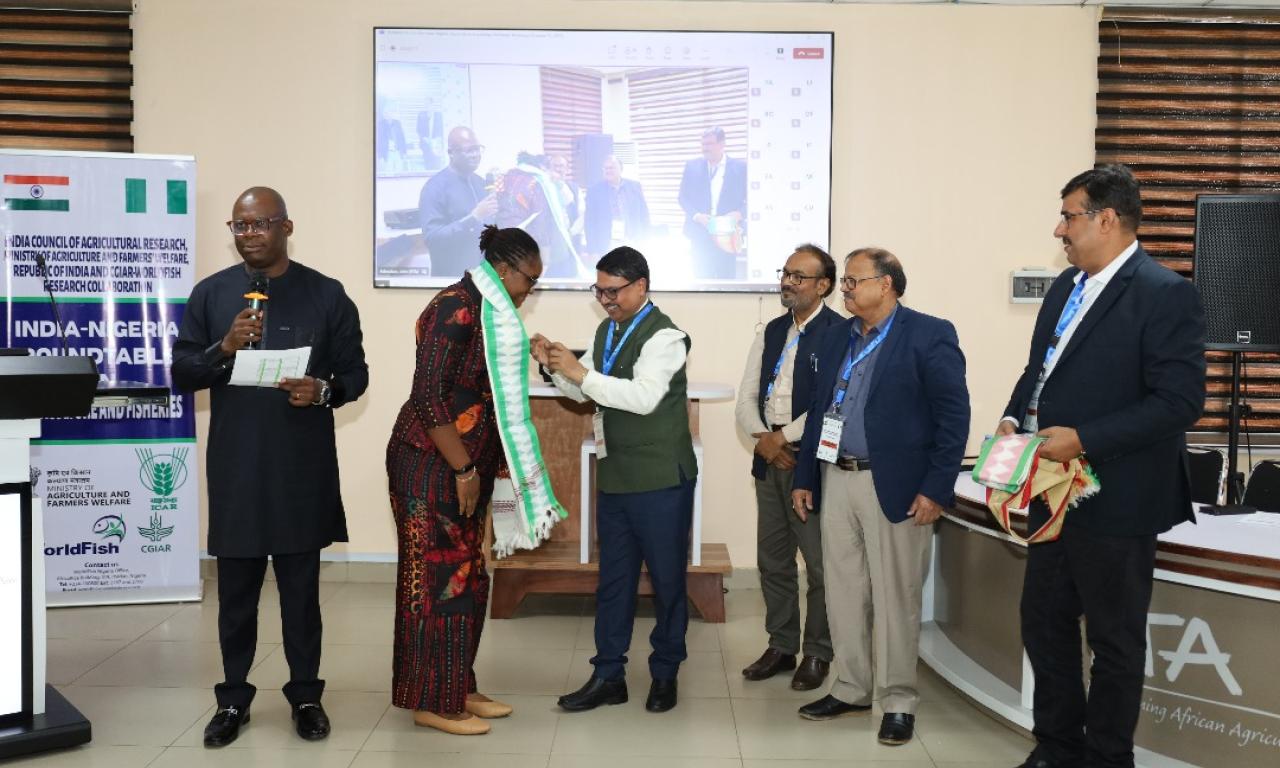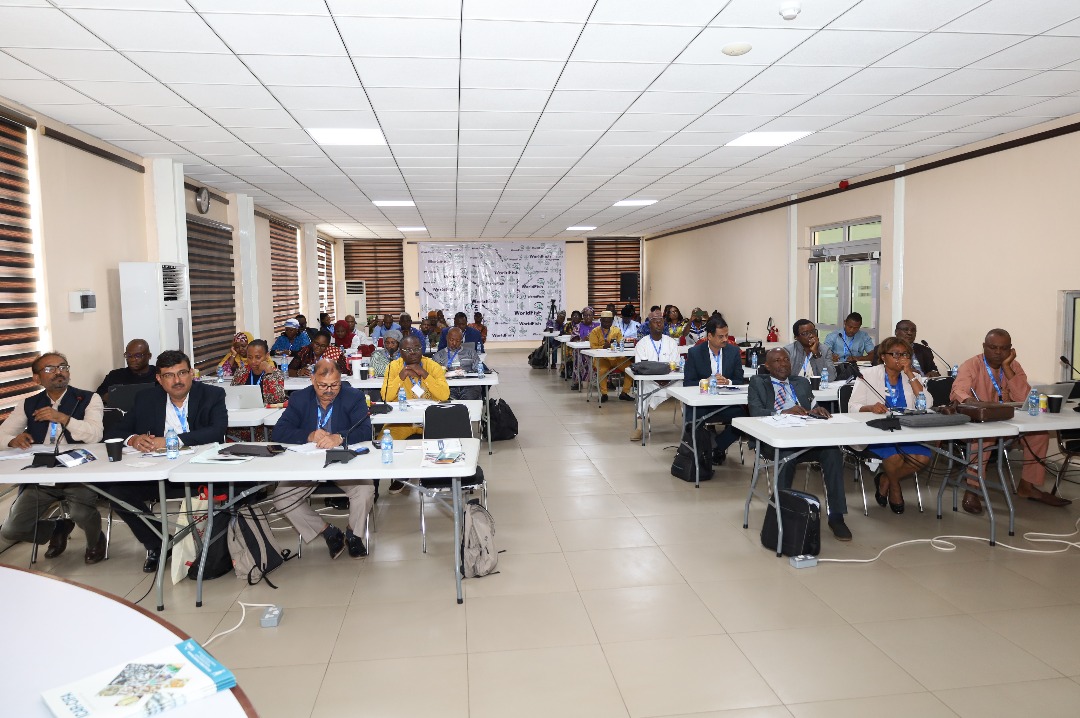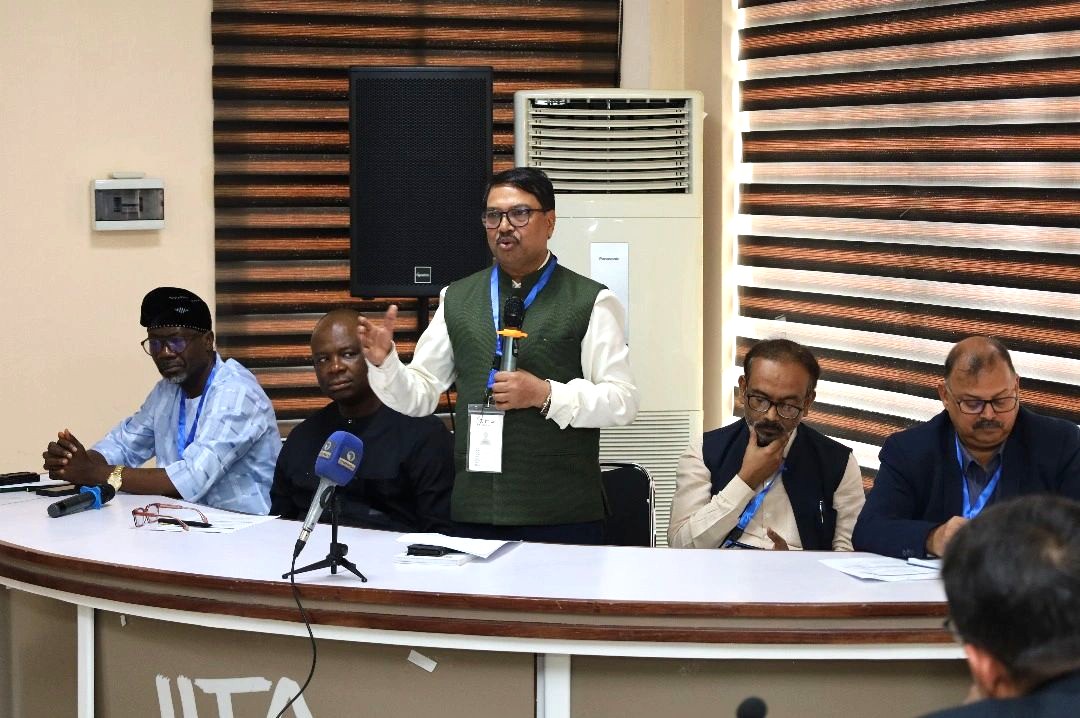
At the International Institute of Tropical Agriculture in Ibadan, leaders from India and Nigeria gathered to explore how two of the world’s fastest-growing aquaculture nations can learn from each other. The India–Nigeria Aquaculture Knowledge Exchange Workshop, hosted in October 2025 under the WorldFish Capacity Sharing Accelerator Program, brought together 56 participants from government, research, business, and development circles to share innovations and forge partnerships for a more sustainable and inclusive blue economy.
A Shared Vision for Aquatic Prosperity
India and Nigeria, though geographically distant, share common challenges and opportunities in aquaculture. The workshop served as a platform to exchange knowledge, showcase innovations, and build partnerships that could transform aquaculture into a driver of inclusive economic growth.
Dr. Charles Iyangbe, WorldFish Country Representative for Nigeria, emphasized WorldFish's mission to harness aquatic foods for nutrition, livelihoods, and ecosystem restoration. He noted that India’s success in aquaculture, particularly in feed systems, cooperative models, and value chain integration, offers valuable lessons for Nigeria.
"Our vision is a world where sustainable aquatic food systems reduce poverty, improve nutrition, generate jobs, and strengthen resilience against climate change. This cannot be achieved by working in isolation. It demands collaboration — across governments, research institutions, the private sector, and development partners. And that is why today’s dialogue between India and Nigeria is so important,” said Dr. Iyangbe.

India’s Aquaculture Success Story
India’s aquaculture sector has grown exponentially, producing over 12 million metric tons annually. Dr. J.K. Jena of ICAR showcased India’s achievements in breeding technologies, feed innovation, disease management, and digital tools. From genetically improved fish strains to solar-powered cold chains, India’s model demonstrates how public–private partnerships (PPPs), research, and entrepreneurship can drive sectoral transformation.
“Nigeria and India have a lot to learn from each other in the area of aquaculture. India has worked on several fish species which could be useful to Nigeria in areas of information sharing, human resources exchange and capacity building. No country is an island of knowledge; there is therefore a need for collaboration between countries to share and exchange fast-growing technology and development,” said Dr. Jena.
Nigeria’s Aquaculture Landscape: Challenges and Opportunities
Despite its rich aquatic resources, Nigeria faces a fish supply deficit of over 2.5 million tonnes annually. Indeed, stakeholders at the roundtable event identified feed affordability (73%), access to finance (57%), and market inefficiencies (46%) as the most pressing challenges facing the fisheries sector. Other issues include post-harvest losses, poor seed quality, and fragmented policy frameworks.
However, innovations like NSPRI’s Ice Fish Boxes, improved smoking kilns, and modular cold chain systems are helping reduce spoilage and improve food safety. The workshop emphasized the need for inclusive PPPs to address these gaps.

Empowering Women and Youth
Gender and youth empowerment emerged as cross-cutting themes. Over 60% of participants linked empowerment to access to finance and affordable inputs. Programs like SWOFEN (Support to Women Fish Entrepreneurship in Nigeria) aim to build capacity, promote leadership, and connect women entrepreneurs to markets.
Youth-led innovations in aquatech, such as Internet-of-Things (IoT)-based feeding systems and digital market platforms, are also gaining traction. Discussants recommended participatory monitoring and evaluation (PM&E) to ensure equitable benefits across groups.
Investment and Innovation: Unlocking Nigeria’s Potential
Mr. Rajeev Kumar of Premium Aquaculture Ltd. outlined Nigeria’s potential in GIFT Tilapia, feed production, and processing. Stakeholders prioritized PPPs for feed localization (35%), farmer training (32%), and hatchery development (14%). Financing models such as cooperatives (41%) and blended finance (30%) were favored for supporting smallholders.
India’s experience shows that strategic investments in feed mills, hatcheries, and digital platforms can yield significant returns. Nigeria can replicate cluster-based models, establish aquaculture parks, and promote inclusive financing mechanisms to attract investors and empower smallholders.
CapSha: A Framework for South–South Collaboration
Under the Collaborative Africa–India Partnership for Sustainable and Holistic Aquaculture (CapSha), proposed joint initiatives include:
- Nigeria–India Aquaculture Innovation and Technology Hub
- Women and Youth Aquapreneur Incubation Program
- Joint Aquaculture Industrial Clusters
- Collaborative Research and Innovation Fund
These programs aim to foster technology transfer, policy dialogue, and inclusive investment across the aquaculture value chain.
Participants emphasized that success should be measured by: Increased fish production (75.7%), higher farmer income (73%), reduced post-harvest losses (43%), employment generation (38%), enhanced exports and market access (27%).
Stakeholders also highlighted the importance of participatory monitoring (54%) and gender inclusion tracking (13.5%) as key mechanisms for accountability and learning.
The India–Nigeria Roundtable shows the power of South–South Cooperation in transforming aquaculture. By combining India’s innovation-driven model with Nigeria’s resource potential, both nations are poised to build a resilient, inclusive, and commercially viable aquatic food system.
